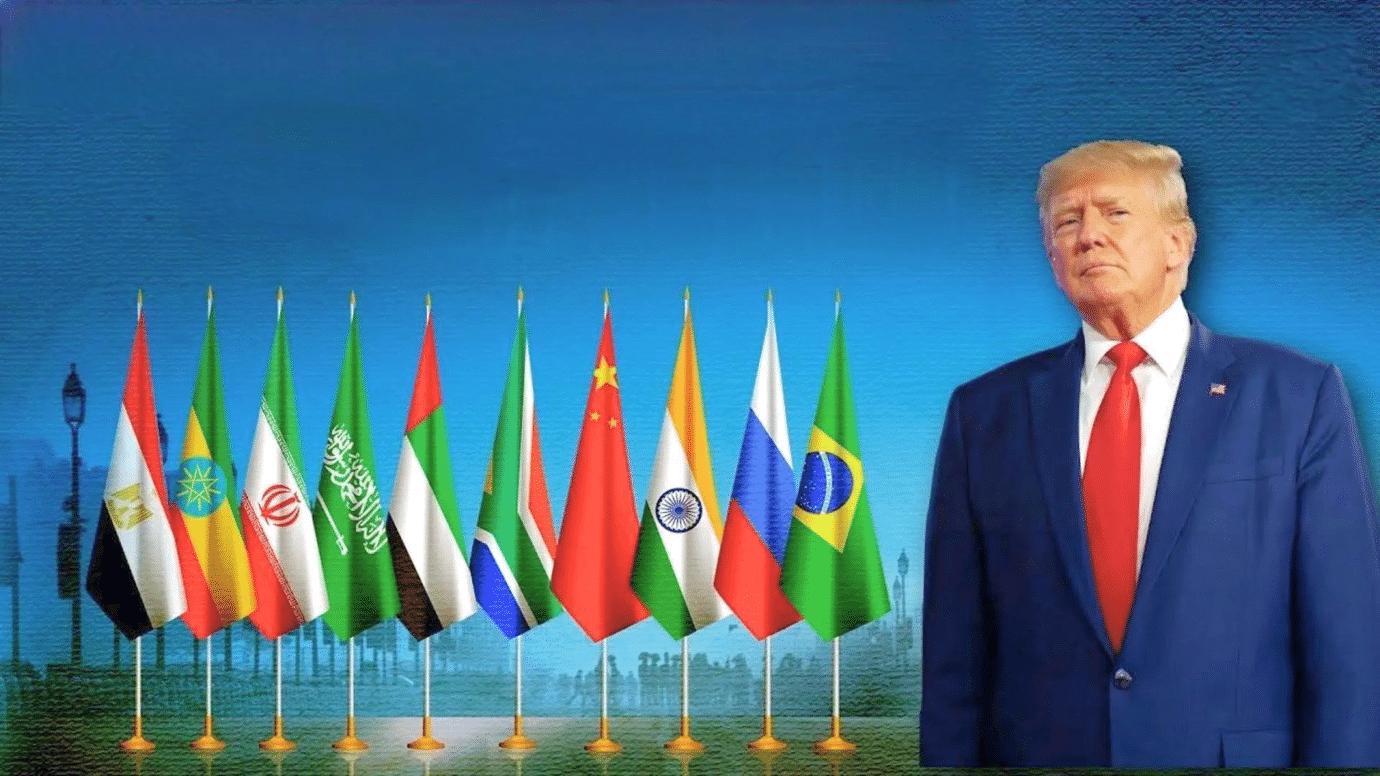BRICS in the Trump Era

The return of Donald Trump to the White House in January 2025 has injected fresh uncertainty into the geopolitical landscape, particularly for the BRICS bloc, a coalition of emerging economies comprising Brazil, Russia, India, China, South Africa, and newly admitted members like Egypt, Ethiopia, Iran, and the UAE. Trump’s explicit threats of 100% tariffs on BRICS nations if they challenge the dominance of the US dollar have set the stage for a high-stakes confrontation between Washington and a bloc increasingly seen as a counterweight to Western hegemony. Yet, while Trump’s protectionist policies aim to safeguard American financial primacy, they may inadvertently accelerate the very trends they seek to contain BRICS’ expansion, de-dollarization efforts, and the bloc’s push for a multipolar world order.
Central to Trump’s strategy is the use of tariffs as a coercive tool to deter BRICS from undermining the dollar’s global reserve status. He has repeatedly warned that any move to create a common BRICS currency or promote alternatives to the dollar would trigger punitive measures, effectively cutting off access to the US market. This stance reflects broader anxieties about the bloc’s growing economic clout BRICS nations now account for 34.9% of global GDP (PPP), surpassing the G7’s 30.05%. However, analysts argue that displacing the dollar remains a “tall order” due to its entrenched role in global trade and finance, representing 58% of foreign exchange reserves and dominating commodities markets.
While Russia and China have spearheaded de-dollarization efforts, such as settling bilateral trade in yuan and rubbles, the lack of a unified BRICS currency or cohesive strategy has limited progress. Brazil, once a proponent of a common currency, abandoned the idea in early 2025, opting instead to promote local currency settlements. Trump’s threats, though blunt, highlight the structural challenges BRICS faces: the dollar’s liquidity, the euro’s failed bid for supremacy, and the yuan’s limited international usability.
Despite these hurdles, BRICS has continued to expand, adding six members in 2024, including Saudi Arabia and Indonesia, with over 30 countries expressing interest in joining. This growth signals the bloc’s appeal as a platform for “global revisionism,” particularly among nations chafing under US sanctions or seeking alternatives to Western-led institutions like the IMF. However, expansion has also exposed fractures. New members like Iran and Saudi Arabia bring entrenched regional rivalries, while India’s strategic alignment with the US complicates consensus-building.
India’s ambivalence is particularly striking. As a founding BRICS member, it has resisted initiatives like a shared currency and deepened defence ties with Washington, including a landmark 2023 cooperation deal. This “paradoxical positioning” underscores the bloc’s struggle to reconcile divergent national interests, with critics dismissing BRICS as a “talking shop” lacking concrete policies. Even climate finance discussions at recent summits have yielded vague commitments, reflecting the difficulty of harmonizing priorities across 15+ members.
Amid these challenges, China has emerged as BRICS’ de facto leader, leveraging its economic heft to court developing nations. Beijing has rolled out zero-tariff policies for least-developed countries, positioning itself as a patron of the Global South. This strategy aligns with its broader ambition to reshape global governance, exemplified by institutions like the New Development Bank (NDB) and Asian Infrastructure Investment Bank (AIIB). Analysts like David Lubin argue that China’s trade dominance, with 120 countries counting it as their main partner, grants it unique influence to mitigate US tariff impacts on BRICS allies.
Trump’s policies may inadvertently bolster this narrative. By weaponizing tariffs, the US risks alienating neutral nations, pushing them closer to Beijing. For instance, African nations, where China’s favourability ratios outpace the US 3:1, increasingly view BRICS as a vehicle for economic diversification. Similarly, Middle Eastern states like the UAE and Saudi Arabia, though hedging their bets, see BRICS as a hedge against overreliance on Washington.
The bloc’s future hinges on its ability to translate rhetorical ambitions into actionable frameworks. While BRICS has made strides in de-dollarization, such as Russia’s SWIFT alternatives and local currency agreements, the absence of a unified financial infrastructure limits its impact. Moreover, internal security rivalries, like the India-China border clashes or Saudi-Iran tensions, threaten to derail cooperation.
Trump’s aggressive posturing could either galvanize BRICS cohesion or exacerbate its divisions. Some members, like Brazil and Turkey, may prioritize maintaining US trade ties over bloc solidarity, while others, like Russia and Iran, already under heavy sanctions, have little to lose by defying Washington. For now, the group’s response has been measured: a joint statement criticizing “unilateral measures” while avoiding direct confrontation.
The Trump presidency represents both a risk and an opportunity for BRICS. While his tariffs could stifle short-term economic coordination, they also underscore the urgency of reducing dollar dependency and strengthening multilateral alternatives. China’s rising influence, coupled with the Global South’s disillusionment with Western hegemony, provides a fertile ground for BRICS to expand its reach. Yet, the bloc’s success ultimately depends on overcoming internal fissures and transforming its aspirational rhetoric into tangible institutions. In this high-wire act between ambition and reality, BRICS’ ability to navigate Trump’s America will determine whether it evolves into a genuine counterbalance or remains a fragmented coalition of convenience.












